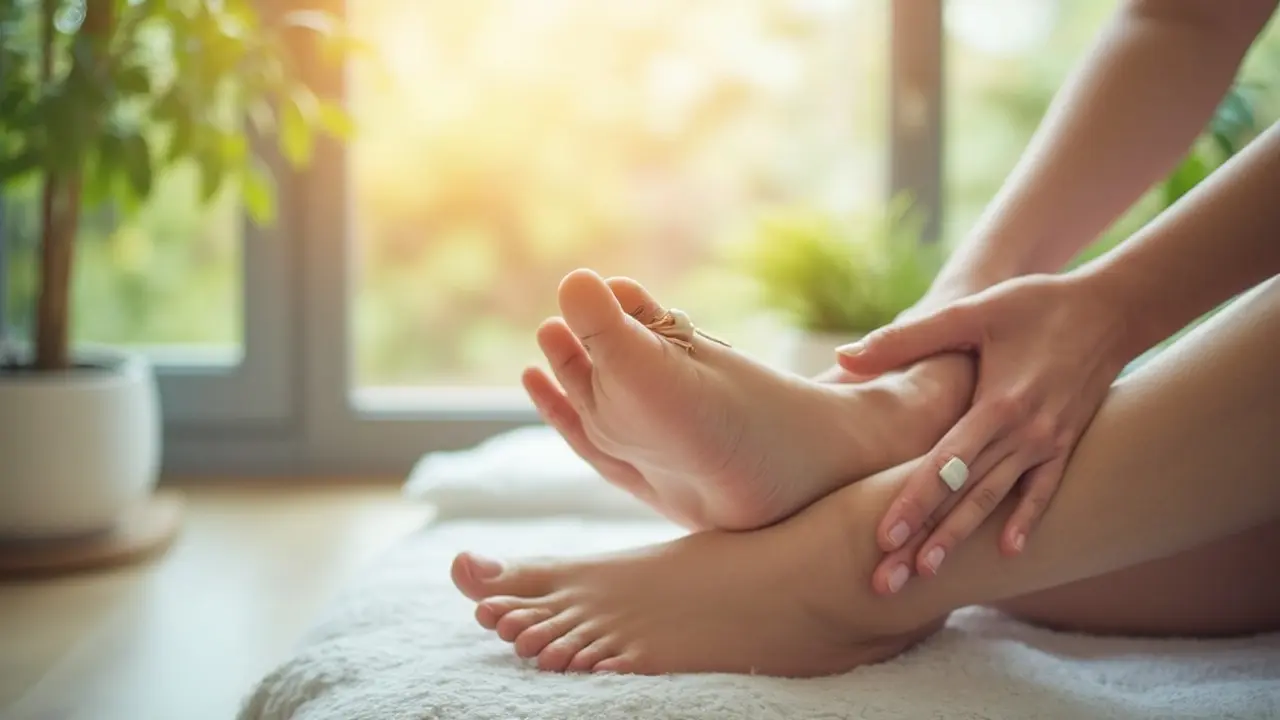Ever wondered why a simple rub on your feet after a long day feels so insanely good? Foot massage is more than just a guilty pleasure—it taps into deep-rooted traditions, science-backed benefits, and a little bit of everyday magic. More people in the UK are embracing the healing powers of foot massage, not just in fancy spas but right at home. Whether you’re desk-bound or constantly on your feet, your soles carry more than your physical weight. Here’s the eye-opening truth: your feet have around 7,000 nerve endings. That’s like a switchboard into your body’s sense of wellbeing. Some folks in London swear their headaches disappear after a proper foot rub, while others use it to drift off on sleepless nights. Let’s lift the curtain on how a humble act of self-care can do so much more than soothe tired toes.
Ancient Roots and Modern Evidence: Foot Massage Is Not Just Hype
Believe it or not, foot massage isn’t just a modern wellness trend. History books from China, Egypt, and even Rome show illustrations of people massaging feet thousands of years ago. That legacy isn’t lost today. Reflexology, a type of foot massage based on pressure points, is practised everywhere—from Hong Kong salons to NHS-approved clinics in London. So, what’s really going on?
Modern science joins in: multiple studies show how regular foot massages can lower anxiety and even reduce blood pressure. One 2023 study at King’s College, London, looked at stress levels in NHS nurses. After a week of daily 20-minute foot massages, their average stress scores dipped by 40%. Fancy that. When you massage your feet, you boost blood flow, ease muscle tension, and trigger the body’s release of endorphins (those neurotransmitters that make you feel seriously mellow).
Reflexology goes a step further. The idea is that certain spots on your feet correspond to different body parts—think your liver, heart, or even sinuses. While not every doctor swears by the old maps of toes and organs, thousands of people say they get real relief from pain and migraines when they target the right spot. This blend of old wisdom and new research turns simple foot rubs into something far greater than cosmetic pampering—it’s preventative health, stress management, and pain relief in one.
The Real Benefits: From Headaches to Heart Health
Get this: a 2021 British Heart Foundation survey found that more than 60% of people in the UK feel chronic foot pain at least twice a month. Yet, most never consider foot massage as real therapy. Here’s what they’re missing. Foot massage increases local blood circulation, pushing more oxygen and nutrients to tired or injured tissues. This is crucial if you’re healing from sports injuries, surgery, or just spend half the day on your feet. And while it’s true this can help ease muscle pain, the ripple effects are surprising.
Take headaches for example. A small Cambridge University trial in 2022 followed migraine sufferers for eight weeks while they massaged their feet each night. Results? Over half experienced a dramatic drop in both headache frequency and intensity. No side effects. For people living with high blood pressure, a few randomized controlled trials show a regular foot massage routine can trim systolic numbers by up to 10 mmHg—about the same as some first-step medications, minus the pills.
The list keeps growing. Better foot circulation means warmer toes on cold winter nights, a godsend if you suffer from Raynaud’s or poor circulation. Insomnia, restless legs, or chronic fatigue? There’s evidence foot massage before bedtime calms the nervous system, helping people fall asleep faster and stay asleep longer. Even the British Pain Society now acknowledges foot massage as a legit part of multi-modal pain therapy.
| Benefit | Evidence |
|---|---|
| Pain Relief | King’s College study: 55% decrease in pain for chronic sufferers after 2 weeks of daily massage |
| Stress Reduction | Average NHS nurse stress score dipped by 40% after daily foot massage (2023) |
| Lower Blood Pressure | 3 randomized control trials; average systolic drop 8-10 mmHg |
| Improved Sleep | 2022 PHE survey: 63% slept better with nightly foot rubs |
| Migraine Relief | Cambridge University trial: 52% reported fewer migraines after 8 weeks |

How to Give (or Get) an Amazing Foot Massage—Without Any Fancy Tools
You don’t need a spa, oils or mystical skills to get real relief. Anyone can master the basics of foot massage right at home. Start by soaking your feet in warm water—just 10 minutes loosens up tight skin and flesh, making everything feel softer. Then, get a non-greasy moisturiser. Squeeze a small amount onto your hands—less is more, just enough to glide over the skin. Now, work your way through these game-changing steps that make a huge difference.
- Thumb Walking: Use your thumbs to gently press and “walk” from your heel to your toes. If you find a sore spot, hold pressure for 10-15 seconds. This wakes up your circulation big time.
- Knuckle Kneading: Curl your hand into a fist and gently knead the arch of your foot with your knuckles. It’s amazing for melting tension after a day spent walking or standing.
- Toe Stretch and Squeeze: Gently pull, twist, and release each toe. This move isn’t just satisfying—it stimulates nerves connected to balance and posture.
- Top-of-Foot Sweep: Use your palms to stroke down from the ankle across the top of your foot, pushing towards your toes. This move is for circulation and all-over relaxation.
- Ankle Circles: Hold your foot with one hand and slowly rotate the ankle in gentle circles. It’s great for lymphatic drainage and figuring out hidden stiffness in your joints.
- DIY Pressure Points: Press the tender spot just below the ball of your big toe to relax the diaphragm area—reflexologists swear by it when clients feel winded or anxious.
If you’ve got a tennis ball lying around, stick it under your foot and roll it under your arch, heel to toe. This handy move loosens stubborn knots without wearing out your hands. Set a timer for 10 minutes—daily rhythm matters more than marathon sessions. Don’t forget both feet, and remember: firm pressure, always stay under your pain threshold.
If you’re giving a massage to someone else, check in with them. Communicate about pressure and focus areas—what feels lovely for one person can feel tender for another. People with diabetes, neuropathy, or certain vascular conditions should talk to a doctor first, but for most, it’s a safe and rewarding habit.
Surprising Ways Foot Massage Can Transform Your Self-Care Routine
Once you get the hang of regular foot massage, don’t be surprised when you start seeing ripple effects through the rest of your life. For many Londoners, foot massage is now a core part of their self-care checklist (parked right next to journaling, yoga, and herbal teas). It’s a simple way to forge a mindful connection with your body and bring awareness to aches before they get worse.
Stress? There’s nothing like a quick rub under your desk between meetings or while watching telly in the evening. Busy mums find embracing foot massage helps carve out little islands of calm during the most hectic days. If you’re crazy about running or cycling, work this into your post-exercise cool down—you’ll recover faster and help steer clear of nagging plantar fasciitis or Achilles tendinitis. Some folks even say nightly foot massage becomes their wind-down ritual, cueing their brain for sleep better than any meditation app.
Partners and flatmates often share foot massage as a cheap, cheerful way to bond. It’s surprisingly intimate—more so than you’d expect. There’s trust involved, and the act of touch sends powerful signals to both your brain and heart. The emotional effects go well beyond the physical—think improved mood, fewer arguments, and stronger relationships.
Caring for your feet regularly can also help spot problems early. Bunions, corns, toe deformities, and even fungal infections are more obvious when you pay attention every day. The podiatry crowd in London have long said this is one reason foot massage keeps folks out of their offices. Plus, regular self-massage does wonders for foot flexibility and balance as you age, lowering the risk of falls or injury.
Technology’s catching up too: there are now affordable heated massagers, vibrating rollers, and pressure-point tools for hardcore enthusiasts. But the essentials are always the same—listen to your body, give yourself permission to slow down, and make this ancient practice your own. The next time you’re tempted to ignore sore feet, just remember: healing often starts where you least expect it—right at your toes.

